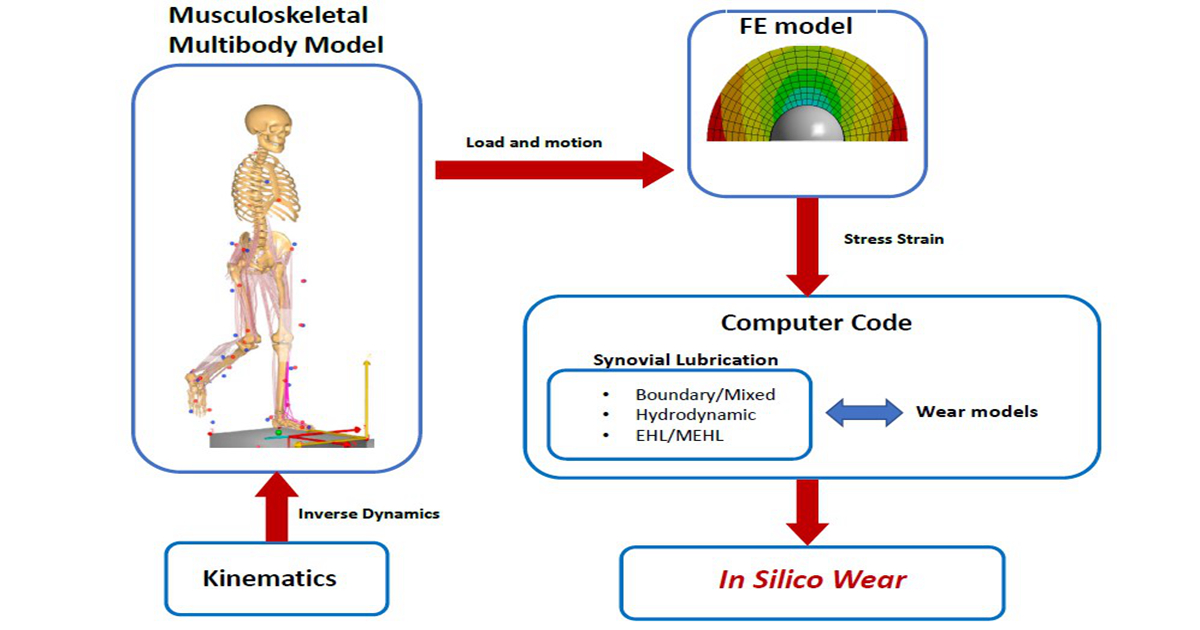In-Silico Methods in Musculoskeletal Biomechanics and Biotribology Ⅱ
A special issue of Applied Sciences (ISSN 2076-3417). This special issue belongs to the section "Biomedical Engineering".
Deadline for manuscript submissions: closed (25 March 2022) | Viewed by 12902
Related Special Issue: In-Silico Methods in Musculoskeletal Biomechanics and Biotribology

Special Issue Editor
Interests: (bio)tribology; tribo-corrosion; biomechanics; biocomposites; biomaterials; green lubricants; dynamical systems; multibody; acoustic noise; mechanical vibrations
Special Issues, Collections and Topics in MDPI journals
Special Issue Information
Dear Colleagues,
Nowadays, in silico approaches in biomechanics constitute an exciting research area devoted to the possibility of using computer simulations in the description of the mechanical behavior of biological systems with particular reference to their movement, structure, and biotribological interactions. In this research field, studies are often approached using expensive and time-consuming in vivo, ex vivo, and in vitro experimental investigations with the aim to obtain useful information in human prosthesis/orthosis design but also in prevention, diagnosis, prognosis, and monitoring. To date, the possibility of describing the mechanics of the living organism in the language of mathematics, generating sophisticated and useful computer algorithms, has attracted the attention of researchers and encouraged them to develop more and more accurate simulation models, both for understanding the “real” behavior of the investigated biosystems and also for the optimal design of increasingly high-performing devices. Obviously, the accurate modeling of musculoskeletal biomechanics accounting for biotribological issues requires deep knowledge and structured scientific cooperation in multidisciplinary areas, such as musculoskeletal multibody non-linear modeling, muscles and tissues modeling, contact mechanics, synovial lubrication modeling, tribo-corrosion etc.
This Special Issue aims to collect the latest advances in musculoskeletal biomechanical and biotribological modeling in order to allow the scientific community to move toward computer modeling and then in silico investigations. Original theoretical, numerical, and experimental research papers, as well as reviews, dealing with the latest developments on this topic are welcome from both academic researchers and their industrial peers.
This Special Issue will cover principally the following topics:
- Biomechanics of the musculoskeletal;
- Mechanics of hard and soft tissues;
- Dynamic modeling of human motion;
- Biotribology of natural and artificial human synovial joints;
- Mechanics of bones and joints;
- Tribological behavior of biomaterials;
- Modeling of biomechanical data uncertainty.
Prof. Dr. Alessandro Ruggiero
Guest Editor
Manuscript Submission Information
Manuscripts should be submitted online at www.mdpi.com by registering and logging in to this website. Once you are registered, click here to go to the submission form. Manuscripts can be submitted until the deadline. All submissions that pass pre-check are peer-reviewed. Accepted papers will be published continuously in the journal (as soon as accepted) and will be listed together on the special issue website. Research articles, review articles as well as short communications are invited. For planned papers, a title and short abstract (about 250 words) can be sent to the Editorial Office for assessment.
Submitted manuscripts should not have been published previously, nor be under consideration for publication elsewhere (except conference proceedings papers). All manuscripts are thoroughly refereed through a single-blind peer-review process. A guide for authors and other relevant information for submission of manuscripts is available on the Instructions for Authors page. Applied Sciences is an international peer-reviewed open access semimonthly journal published by MDPI.
Please visit the Instructions for Authors page before submitting a manuscript. The Article Processing Charge (APC) for publication in this open access journal is 2400 CHF (Swiss Francs). Submitted papers should be well formatted and use good English. Authors may use MDPI's English editing service prior to publication or during author revisions.
Keywords
- in-silico methods
- biomechanics
- musculoskeletal models
- (bio)tribology
- arthroplasty human synovial joints
- bones
- biomaterials
Benefits of Publishing in a Special Issue
- Ease of navigation: Grouping papers by topic helps scholars navigate broad scope journals more efficiently.
- Greater discoverability: Special Issues support the reach and impact of scientific research. Articles in Special Issues are more discoverable and cited more frequently.
- Expansion of research network: Special Issues facilitate connections among authors, fostering scientific collaborations.
- External promotion: Articles in Special Issues are often promoted through the journal's social media, increasing their visibility.
- Reprint: MDPI Books provides the opportunity to republish successful Special Issues in book format, both online and in print.
Further information on MDPI's Special Issue policies can be found here.





